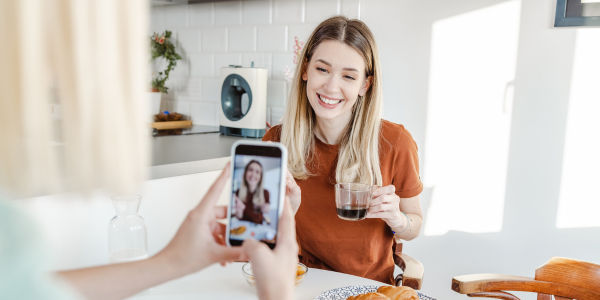In the world of small business marketing, staying lean without losing impact is the name of the game. Throwing thousands at celebrity endorsements or large influencer campaigns simply isn’t practical for most small businesses. But that doesn’t mean there aren’t smart ways to boost your brand’s presence. One tool that’s been turning heads for all the right reasons is the micro-influencer strategy. These are influencers with smaller but fiercely loyal followings that can create real traction for your brand without wrecking your budget. This post will show you how smart business owners are working with micro-influencers to create trust, sales, and long-term growth. Let’s break down why this works so well, how to find the right influencers, and what you need in place before your first campaign.
Why micro-influencers work for small brands
Micro-influencers usually have audiences that range from 1,000 to 100,000 followers. That may sound small in a world where viral social media content stretches into the millions, but it’s actually their biggest strength. These influencers operate in tighter, more engaged communities. Their followers pay attention, comment, ask questions, and most importantly, take action based on their recommendations. Whether it’s fashion, fitness, tech gadgets, or local restaurants, micro-influencers often feel more like trusted friends than distant celebrities.
That level of personal trust means much higher engagement rates. Followers of micro-influencers give more likes, share posts more frequently, and actually click the links they’re given. Compared to larger influencers who sometimes act more like scripted brand ambassadors, these folks feel human. Their content fits naturally into your audience’s feed without screaming “ad.” And since they typically charge far less than bigger influencers, you get content that works better, costs less and feels more real. That’s a rare combination in small business marketing.
Understanding what makes a strong influencer
A strong micro-influencer isn’t just someone who posts pretty photos. Influence is more about connection than popularity. Look beyond the follower count. Are people commenting genuine thoughts on their posts? Are those comments being replied to? Do the images or videos show real use of the brands being promoted? This kind of detail reveals authenticity. If there’s a real discussion happening in the comments, you’re on the right track.
Take a few hours to follow some potential influencers. Watch their content over several days. Are they consistent with how they speak about products? Do they convey the qualities that reflect your values? The more natural the fit, the easier it will be to build a working relationship that benefits both parties. Avoid influencers that bounce from product to product with little substance. Their followers are likely just scrolling through, hardly stopping to listen.
Finding influencers that match your business
Think local. Micro-influencers in your region often make the perfect match. A boutique bakery in Austin probably doesn’t need someone from Los Angeles pushing their cupcakes. Start by looking into local hashtags that relate to your business. Use tools like Instagram search or TikTok discovery to find creators posting under these niche tags.
Reach out personally. Skip the generic pitch. Mention specific posts you love, and explain why you think they might relate to your products or services. The more personal, the better. Offer them a sample or trial in exchange for honest feedback rather than leaping straight into payment negotiation. This builds trust and gives you a clearer view of how they might genuinely integrate your business into their content.
Also think about your brand values. Are you eco-friendly? Target influencers that show they care about sustainability. If your product supports wellness, look for content creators who promote healthy living in an authentic way. You should be able to articulate clearly why this person compliments your brand. This clarity also helps you pitch your business in a way that gets them excited.
Crafting a winning micro-influencer strategy
Before contacting anyone, outline your campaign goals. Are you looking for traffic to your site? Do you want content to reuse on your social channels? Do you need to move a specific product? Get clear internally. This gives you and your influencer the same markers to measure impact. Confusion is the main reason small campaigns fall flat. No one really knew what they were trying to get out of it.
Always allow some creative freedom. While it’s tempting to script every single post, try not to. The best micro-influencer campaigns work because the final content feels real, not staged. Think of it more like collaboration than control. Set parameters. Provide product talking points. Then step back and let them use their voice. That’s why you selected them in the first place.
Track campaign results with clear markers. Give them a discount code to share, create landing pages tied to their content, or follow up on direct traffic bumps after posts go live. Then talk. Did they enjoy the process? Was their audience responsive? Keep that conversation going past the first post. Building long-term relationships with a handful of influencers beats constantly chasing new ones.
Budget thinking for tighter campaigns
You don’t need to spend thousands to work with micro-influencers. Many will work in exchange for product if your offering fits their interests. Others may charge small amounts in the low hundreds. The strongest value often comes from influencers with less than 10,000 followers. Their interactions are tighter, and they often treat their projects with more personal attention.
Look for packages, not just one-and-done posts. You’ll both benefit more by building momentum. An influencer who mentions your brand three times over a month can develop real awareness. Mix formats if possible. A Reel, a Story set, and a product post give different layers of exposure. If you’re working across multiple influencers, stagger the posts for sustained waves rather than a single peak. Whoever manages your campaign should have a simple spreadsheet for tracking posts, comments, traffic, and cost. Don’t over-complicate it.
When influencers become creative partners
Some micro-influencers are incredible creatives in their own right. Use this to your advantage. If your project could use better visuals or unique takes on content, let them build ideas with you. They usually know what performs well in their feed way better than you do.
Video walk-throughs, product challenges, usage hacks, or styling tips are just some of the formats that can build natural engagement. These types of content build trust not just in the influencer, but in the product itself. If it’s something complex, like skincare or software, an honest reaction will always perform better than a glossy ad.
Ask if they’d be interested in longer collaborations. That could include branded ambassadorships, emailed recommendations, even involvement in product testing. This kind of partnership creates ripple effects. Their buy-in becomes deeper, your customer loyalty gets influenced, and the audience begins to associate them with your business over time.
Common mistakes small businesses should avoid
Don’t pretend to be bigger than you are. Influencers can spot a cash grab quickly. Be honest about your size, your goals, and your limitations. Most people respect that. You’re offering them a chance to work on something cool, not make them rich. As with any relationship, honesty is the first thing that builds trust.
Never demand returns. Influencer marketing isn’t transactional in the same way as ads. You’re building presence, not guaranteeing purchases by a hard number. If you’re under pressure to get 20 orders from a $200 spend, influencer marketing probably isn’t right. That money might go further in paid search. Time matters, too. These campaigns build slowly. Give them time to grow legs before declaring them successes or failures.
Avoid micromanaging. Once you’ve trusted someone to speak for your brand, let go enough that they can do what they do best. You wouldn’t tell an artist exactly where to put each brush stroke. Treat your influencer with that same respect. If something doesn’t hit properly, adjust next time. Don’t strangle it in its infancy.
Micro-influencer wins worth learning from
Food trucks, local gyms, and even boutique software startups have built real traction through micro-influencers. A vegan bakery in Portland tripled their weekend foot traffic after a local food blogger shared a behind-the-scenes video. They paid only in pastries and gratitude. A micro-green seller connected with plant-based fitness trainers. Together they built meal challenges for 30-day plans, driving both content and revenue.
Local events and product launches also see major bumps. A handmade jewelry maker partnered with five local fashion influencers over a weekend. Each one showed a different item. They used Stories, posts, and styled images. Orders flooded in across the next two weeks not just for those items, but from users browsing the full catalog.
You don’t need a million-dollar ad budget to move product or generate buzz. You need authenticity, a little creativity, and people who actually want to talk about your business. That’s the micro-influencer advantage.
Bringing it all together for real impact
Micro-influencer strategy gives small businesses a smart, responsive way to grow. Real people talk to real audiences using content that fits right into the social media stream. It’s cost-effective. It’s flexible. It opens more doors to meaningful engagement than shouting through traditional ads. By choosing your partners well, setting clear goals, and being open to creativity, you can make micro-influencers a core part of your small business marketing plan. The best part is that many of your future customers are probably already following them. This isn’t about mass popularity. It’s about real influence in the right corners of the internet.






